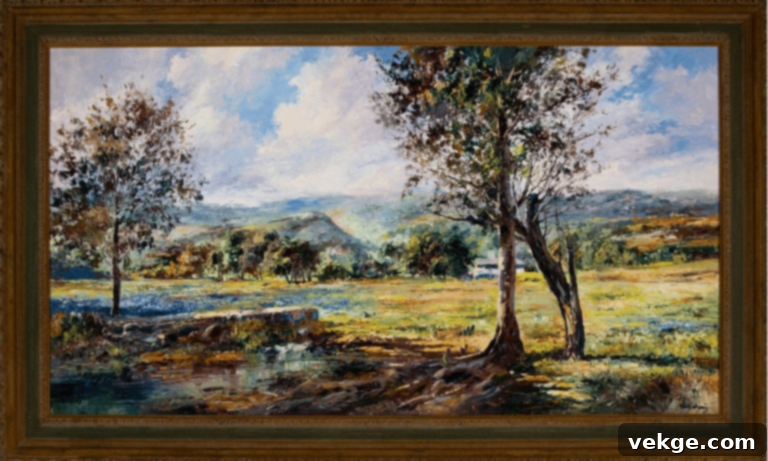Elevate Your Home Decor: The Ultimate Guide to 40×40 Picture Frames
Transforming your living space into a reflection of your personality and style doesn’t always require a major renovation. Sometimes, the most impactful changes come from thoughtful details, such as the way you choose to display your cherished artwork, photographs, or prints. A 40×40 frame is an exceptionally versatile and stylish choice that offers the perfect balance of presence and adaptability, making it an excellent option for enhancing any home decor. This comprehensive guide will delve into why a 40×40 frame stands out, explore the diverse types available, and provide expert advice on selecting the ideal frame for your unique artwork. We’ll also spark your creativity with innovative display ideas and offer essential tips for maintaining your frame’s pristine condition, ensuring your visual investments last for years to come.
Why Choose a 40×40 Frame for Your Space?
The appeal of a 40×40 frame extends far beyond its precise dimensions. This specific square size offers a multitude of benefits that make it a superb choice for almost any room in your home or office, effortlessly blending functionality with aesthetic appeal.
- Perfectly Proportioned Size: The 40×40 frame strikes an ideal balance. It’s large enough to command attention and serve as a significant focal point without overwhelming a room. This generous yet harmonious size fits comfortably in various settings, from a cozy bedroom to a spacious living room, or even a professional office environment. It provides ample space for artwork to breathe, allowing the piece to truly shine without feeling cramped.
- Unmatched Versatility: One of the strongest arguments for a 40×40 frame is its incredible versatility. This frame size is perfectly suited to house a wide array of visual content, including vibrant abstract paintings, detailed landscape prints, poignant family photographs, contemporary graphic art, or even cherished memorabilia. Its square format lends itself well to diverse artistic compositions, ensuring that whether your style is avant-garde modern, classic traditional, rustic farmhouse, or chic minimalist, a 40×40 frame can seamlessly complement and enhance your existing decor.
- Adaptability to Various Design Styles: Beyond holding diverse art, a 40×40 frame inherently adapts to different interior design themes. Its clean lines and balanced proportions make it a flexible choice for homeowners, interior designers, and art enthusiasts alike. It can be a minimalist statement in a modern setting, a grounding element in a bohemian space, or a timeless accent in a more traditional room. This adaptability means you can confidently incorporate it into new design schemes as your tastes evolve.
Choosing a 40×40 frame also offers the practical advantage of easy artwork rotation. Its standard yet impactful size makes it simple to switch out seasonal prints, new photographic discoveries, or different artistic moods, allowing you to keep your space dynamic and updated without needing to invest in multiple frame sizes. Its inherent ability to create a captivating focal point ensures that your favorite pieces will always draw the eye and spark conversation.
Exploring Different Types of 40×40 Frames

The material and construction of your 40×40 frame play a pivotal role in its overall aesthetic and how it interacts with both your artwork and your room’s decor. Each material offers a distinct look, feel, and set of benefits. Here are some of the most popular options available:
- Wood Frames: A perennial favorite, wood frames exude a classic, timeless appeal. They come in an astonishing variety of finishes, ranging from natural, unfinished wood tones like oak or pine that lend a rustic or Scandinavian vibe, to rich, stained mahoganies for a traditional look, or smoothly painted finishes in white, black, or custom colors for a contemporary edge. Wood frames are renowned for their sturdiness, durability, and the natural warmth they can bring to any space, making them a versatile choice for almost any artwork or interior style.
- Metal Frames: For those who appreciate sleekness and modernity, metal frames are an excellent choice. Typically crafted from aluminum or steel, these frames are lightweight yet incredibly durable, often featuring slim profiles that give artwork a refined, gallery-like presentation. They are available in various finishes such as brushed silver, matte black, polished gold, or industrial bronze, making them perfect for contemporary, minimalist, or industrial decor themes. Metal frames can provide a sharp, clean border that enhances the artwork without distracting from it.
- Plastic Frames: Offering an accessible and highly versatile solution, plastic (or polystyrene) frames are budget-friendly and come in an extensive spectrum of colors, textures, and styles. Their lightweight nature makes them easy to hang, and their variety ensures suitability for children’s rooms, temporary displays, or situations where cost-effectiveness is a primary concern. While generally less durable than wood or metal, modern plastic frames can often mimic the look of more expensive materials quite convincingly.
- Composite Frames: Composite frames, often made from a blend of materials like recycled wood fibers and resin, offer a compelling balance of strength, style, and often, sustainability. They are engineered to be highly durable and resistant to warping, making them a long-lasting choice. Composite materials can be molded and finished to replicate the sophisticated appearance of real wood or other premium materials at a more affordable price point, providing a smart solution for those seeking both elegance and value.
The choice of frame material fundamentally influences the aesthetic harmony between your artwork and its surroundings. Beyond material, considering the craftsmanship—the precision of cuts, the quality of joins, and the evenness of the finish—is paramount. A well-crafted frame not only looks better but also offers superior protection and longevity for your art. For more detailed insights on the importance of craftsmanship in framing, exploring resources like Art and Object can provide valuable historical and artistic perspectives.
Understanding 40×40 Picture Frames with Glass or Acrylic
The protective layer covering your artwork within a 40×40 frame is crucial, not only for preservation but also for optimizing its visual presentation. Glass and acrylic are the two primary options, each offering distinct advantages.
Using glass in a 40×40 picture frame provides exceptional benefits. It forms a robust barrier against environmental hazards such as dust, dirt, moisture, and even airborne pollutants, keeping your artwork or photographs pristine. Furthermore, glass offers superior optical clarity, ensuring that the colors and details of your displayed items remain vibrant and true to life.
When selecting glass, there are several types to consider, each tailored to different needs and budgets:
- Standard Glass: This is the most common and economical option. It provides good basic protection and clarity, making it suitable for general framing needs where excessive light or reflections are not a major concern. It’s a reliable choice for everyday prints and less valuable pieces.
- Non-Glare Glass: Designed to reduce distracting reflections, non-glare glass is treated to diffuse light, making it easier to view your artwork from various angles, especially in brightly lit rooms or those with direct light sources. While it effectively minimizes glare, it can sometimes slightly soften the image, so it’s a trade-off to consider for optimal viewing.
- Museum Glass: Representing the pinnacle of clarity and protection, museum glass offers the highest level of performance. It features advanced anti-reflective coatings that practically eliminate reflections, creating an almost invisible barrier. Crucially, museum glass also blocks a significant percentage of harmful UV rays (often 99%), offering unparalleled preservation for valuable or irreplaceable artwork by preventing fading and deterioration over time. Its superior qualities make it a preferred choice for archival framing.
While glass remains a popular choice, many individuals are increasingly opting for acrylic as an alternative, particularly for larger frames like the 40×40. Acrylic is significantly lighter than glass, which simplifies hanging and reduces the overall weight on your walls. More importantly, it is much less prone to shattering, making it a safer option, especially in homes with children or in high-traffic areas. However, acrylic can be more susceptible to scratching and can attract dust due to static electricity. To delve deeper into the differences between glass and acrylic and make an informed decision for your framing needs, resources like discussions on Reddit often provide practical insights from experienced users and framers.
How to Choose the Right 40×40 Frame for Your Artwork

Selecting the perfect 40×40 frame for your artwork is an art in itself. The right choice can dramatically elevate the piece, making it a cohesive part of your space, while a mismatched frame can detract from its beauty. Here are essential tips to guide your decision:
- Consider the Artwork’s Style and Content: The artwork itself should be your primary guide. Think about its colors, textures, subject matter, and overall style. For instance, a minimalist piece often benefits from a simple, sleek frame that allows the art to be the sole focus. A highly ornate or traditional painting might be enhanced by a more decorative, vintage-style wooden frame. Bold, contemporary art might look stunning in a stark black or metal frame, while delicate watercolors could pair beautifully with a light, natural wood. The frame should complement, not compete with, the art.
- Match the Room’s Decor and Aesthetic: Your frame should also integrate harmoniously with the room where it will be displayed. For a modern, minimalist living room, a thin black metal frame or a clean white wooden frame would likely be ideal. In a rustic or bohemian-inspired space, a distressed wood frame or one with natural finishes could be perfect. A classic, formal dining room might call for a gilded or dark wood frame. Consider the existing furniture, color palette, and architectural elements of the room to ensure a cohesive look.
- Choose the Right Size (and Proportions): While you’ve committed to a 40×40 frame, it’s crucial to consider the artwork’s exact dimensions *within* that frame. If your artwork is precisely 40×40, a full-bleed presentation without a mat is an option. However, for smaller pieces, the 40×40 frame allows for generous matting, which can dramatically enhance the artwork. Ensure the overall dimensions work for your wall space, allowing adequate negative space around the frame so it doesn’t feel cramped.
- Think About Matting to Enhance Your Art: Matting (or a passe-partout) is an often-underestimated element that can significantly impact the presentation of your artwork. A mat creates a border around your art, providing “breathing room” that draws the eye inward and highlights the piece. It also serves a protective function, preventing the artwork from touching the glass. Choose mat colors that complement the artwork – often a neutral white, off-white, or a subtle color pulled from the art itself. Double matting can add depth and sophistication. Always opt for acid-free mats to ensure your artwork’s long-term preservation.
- Frame Color and Finish: The color and finish of the frame are as important as the material. A black frame offers a strong, contemporary contrast and can make colors pop. A white frame provides a fresh, clean look and can brighten an image. Gold or silver frames add elegance and can pick up metallic accents in your decor. Natural wood frames offer warmth and texture. Consider whether a matte, glossy, or distressed finish would best suit your art and room.
- Consider Your Budget: Framing can range widely in cost depending on materials, glass type, and custom options. Set a realistic budget and explore options within that range. Remember that a quality frame is an investment that protects and enhances your artwork.
For those seeking a wide selection of modern large square frames, particularly in the 40×40 size, exploring dedicated online retailers such as Modern Memory Design can provide access to diverse styles and materials designed to meet contemporary aesthetic demands.
Creative Display Ideas for a 40×40 Picture Frame

A 40×40 picture frame, with its substantial yet balanced presence, can be a stunning and versatile addition to almost any room. Its square format offers unique opportunities for creating captivating visual displays. Here are some creative ways to incorporate and showcase your 40×40 frame:
- Living Room Focal Point: Position your 40×40 frame as the central artwork above a sofa, fireplace mantel, or console table. Its size ensures it will draw the eye and anchor the space. To enhance this, you might pair it with two smaller, complementary frames on either side, or integrate it into a larger gallery wall arrangement where it acts as the cornerstone. Choose artwork that reflects the mood and color scheme of your living space.
- Serene Bedroom Accent: In the bedroom, a 40×40 frame placed prominently above the headboard can create a calming and highly personal touch. Select artwork that evokes tranquility, such as abstract art with soothing colors, a serene landscape, or a cherished black and white photograph. This placement transforms the wall into a decorative feature that enhances the room’s restful ambiance.
- Inspirational Office Addition: Personalize your workspace by using a 40×40 frame to display inspirational quotes, motivating artwork, or even professional achievements. Whether in a home office or a corporate setting, a thoughtfully chosen piece can boost productivity, reflect your professional identity, and add a touch of personality to an otherwise functional space.
- Dynamic Gallery Wall Anchor: A 40×40 frame is an ideal candidate for anchoring a dynamic gallery wall. Start with your 40×40 frame as the central or dominant piece, then arrange an assortment of other frames in varying sizes (e.g., 8×10, 11×14, 16×20) and even different shapes around it. Experiment with mixed frame materials and finishes for an eclectic look, or stick to a cohesive color palette for a more uniform display. This creates visual interest and tells a story through your collection.
- Bold Solo Statement: Sometimes, less is more. On a large, blank wall, a single 40×40 frame can make a powerful, minimalist statement. This approach draws all attention to the artwork itself, allowing it to become a true focal point without competition. It’s particularly effective with striking abstract pieces, high-contrast photography, or bold graphic prints. Ensure the wall is well-lit, perhaps with a dedicated picture light, to highlight the piece.
- Entryway Welcome: Make a strong first impression in your entryway or hallway by featuring a 40×40 frame. It can serve as a captivating welcome, setting the tone for your home’s aesthetic right from the moment guests step inside.
The key to successful display is creativity and considering how the frame and its artwork can enhance the overall atmosphere of your space. Don’t be afraid to experiment with different arrangements and placements until you discover the perfect look that resonates with you and your home.
Maintaining and Caring for Your 40×40 Photo Frame
Proper care and maintenance are not just about keeping your 40×40 photo frame looking good; they are essential for preserving the artwork within and extending the life of the frame itself. Different frame materials and protective layers require specific cleaning approaches. Here are practical tips to ensure your frame remains in top condition:
- Wood Frames: Regular dusting with a soft, dry microfiber cloth is usually sufficient. To avoid scratching the finish, always wipe gently in the direction of the wood grain. Steer clear of harsh chemical cleaners, abrasive sponges, or excessive water, as these can damage the wood’s finish, cause warping, or strip away protective layers. For deeper cleaning or to restore shine, use a wood-specific cleaner or furniture polish designed for the type of finish (e.g., wax for natural wood, spray for painted wood). Always test any new product on an inconspicuous area first.
- Metal Frames: Metal frames are generally easy to maintain. A soft, damp cloth can effectively remove dust and fingerprints. For tougher grime or smudges, a mild soap solution (like diluted dish soap) can be used, but ensure you dry the frame thoroughly immediately afterward to prevent water spots, streaks, or potential rust on certain metals. Avoid abrasive cleaners or scouring pads which can scratch the metal finish. For specialty metals like brass or copper, specific metal polishes might be required to maintain their luster.
- Glass Protection: When cleaning the glass in your 40×40 frame, always use a reputable glass cleaner and a lint-free cloth, such as a microfiber towel. Crucially, spray the cleaner onto the cloth first, rather than directly onto the glass. This prevents any liquid from seeping under the glass and potentially damaging the artwork or the frame’s inner structure. Wipe gently in one direction for a streak-free finish. Avoid ammonia-based cleaners if you have delicate artwork or a mat, as ammonia can sometimes cause discoloration over time.
- Acrylic Care: Acrylic (Plexiglas) surfaces require a delicate touch, as they are more prone to scratching than glass. Use a soft, damp cloth with plain water or an acrylic-specific cleaner. Never use paper towels, abrasive cloths, or harsh chemical cleaners (like window cleaners containing ammonia) as these can scratch, cloud, or dull the acrylic. To remove dust, gently wipe with an anti-static cloth or use a soft, damp cloth to minimize static buildup that attracts dust.
- Environmental Considerations: To protect both your frame and the artwork, avoid hanging your 40×40 frame in areas exposed to direct sunlight for extended periods, as UV rays can cause fading to artwork and discoloration or cracking of frame materials. Similarly, steer clear of areas with extreme temperature fluctuations or high humidity, such as bathrooms or directly above heat sources, which can cause warping, mold growth, or damage to delicate paper or canvas.
- Secure Hanging and Hardware: Regular upkeep also includes periodically checking the hanging hardware. Ensure that your frame is securely mounted to the wall to prevent damage from accidental falls or knocks. Tighten any loose screws, inspect the hanging wire or D-rings for wear, and always use appropriate wall anchors and hooks rated for the weight of your framed artwork.
Consistent care not only preserves the aesthetic appeal of your 40×40 frame but also ensures the longevity and integrity of the precious artwork or photographs it proudly displays.
Conclusion
In summary, a thoughtfully chosen 40×40 frame is far more than just a border for your art; it’s a powerful design element capable of significantly enhancing your home decor and injecting personality into your living space. By understanding the diverse range of materials—from classic wood to sleek metal—and the protective qualities of various glass and acrylic options, you can make an informed decision that perfectly complements your artwork and interior style. The versatility of the 40×40 size allows for endless creative display opportunities, whether as a striking focal point, a key piece in a dynamic gallery wall, or a personal touch in a quiet corner.
Remember that the longevity and continued beauty of your framed pieces rely heavily on proper care and maintenance tailored to the specific materials. By investing a little time in regular cleaning and ensuring a suitable environment, you can preserve your artwork and frame in pristine condition for years to come. Explore the vast array of 40×40 frame options available today, apply the insights from this guide, and embark on a journey to transform your living space into a truly personalized and inspiring sanctuary.
